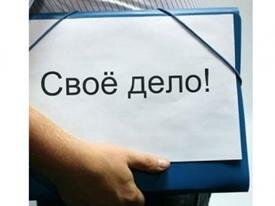Contents
First, it is a relatively easy pattern to identify in a chart. Second, you don’t need to use any technical indicators like the RSI and moving averages. Consider a scenario where a price has recently reached a high after significant momentum but has since corrected.

A cup and handle formation is considered significant when it follows an increasing price trend, ideally one that is only a few months old. The older the increase trend, the less likely it is that the cup and handle will be an accurate indicator. The trade volume should decrease along with the price during the cup and should increase rapidly near the end of the handle when the price begins to rise.

A strategy in more uncertain patterns is to place a limit order just below the pattern’s breakout level, which can trigger execution in the event of retracement. After the initial decline, the stock will find support as bears come back in to capitalize on the lower price. However, bears and bulls will battle at this level, causing sideways movement for a period of time . The pattern begins with an upward trend in stock price that leads to a peak. This suggests bullish sentiment about the company’s performance. The standard cup and handle pattern is a bullish signal, but there is also a bearish version of this pattern called “Inverse Cup and Handle” pattern.
The image below depicts a classic advancing in your career by dr. jeffrey magee and handle formation. Place a stop buy order slightly above the upper trend line of the handle. Order execution should only occur if the price breaks the pattern’s resistance. Traders may experience excess slippage and enter a false breakout using an aggressive entry.
What is a cup and handle pattern?
The volume of trade should move along with the price of the stock. As the base of the cup forms, the volume should remain lower than the average. As the price rises, the volume of trade should also increase. Above is an example of two cup and handles that formed in the Big Tech share basket on our Next Generation trading platform. The pattern on the left is more complex as the cup pattern is wavy and harder to identify. The pattern on the right is more traditional, with a clear cup shape, followed by a handle breakout to the upside.

It helps improve the odds of the price moving higher after the breakout. Whatever the height of the cup is, add it to the breakout point of the handle. For example, if the cup forms between $100 and $99 and the breakout point is $100, the target is $101. Chart patterns, like a triangle, rectangle, head and shoulders, or—in this case—a cup and handle are a visual way to trade.
How to use Structure and ride massive trends
This often results in a rally that can last several weeks or months, and reach the target price that was calculated from the cup and handle pattern. An inverse cup and handle pattern forms with the bottom of the cup being at the top of the stock’s price movement. The handle forms as a subsequent, smaller upward movement at the top of the cup . Again, beware cup and handle patterns that form at the end of a trend rather than partway through it, as they are less likely to signal a strong continuation.
Identifying the cup and handle chart pattern can be complicated, even if you know what you are looking for. Several things can help you identify this bullish continuation pattern, particularly the shape of the chart pattern. While there are many different types of chart formations out there, the cup and handle pattern strategy is one you may want to add to your trading arsenal because of its reliability. The second example is another classic cup and handle pattern that develops over three to four months, with the handle forming over approximately two weeks.
- The cup and handle pattern target generally requires adding the height of the cup to the breakout point in the handle.
- The good thing with a buy stop order is your entry will just be above the highs of the “handle”, and if the breakout is real, that’s one of the best prices to get in.
- This resistance happens at the level where the price reached and started falling.
- However, many swing traders prefer earlier entry points before the actual breakout above the handle.
Typically, a healthy cup and handle pattern has a distinctly rounded bottom. Avoid V-shaped rebounds, as they indicate reactionary buying that could nullify the formation of the handle and subsequent breakout. After a cup and handle pattern forms, the price should see a sharp increase in the short- to medium-term. The cup is formed after an advance and looks like a bowl or rounding bottom. The pattern starts when a stock’s price runs up, then pulls back to form a cup shape.
Stellar Lumens (XLM) Price Prediction: When $1?
The https://business-oppurtunities.com/ then rebounds, testing the previous high resistance levels, after which it falls into a sideways trend. In the final leg of the pattern, the stock exceeds these resistance levels, soaring 50% above the previous high. No one can explain how to trade cup and handle pattern better that way you have explained in this short article. Thomas Bulkowski’s backtests are also lacking strict buy and sell rules, and he argues the cup and handle strategy is inferior to many other patterns. It forms after a price rally, and its depth should be 30-50% of the rally preceding it.

Finally, the security breaks out again, surpassing its highs that are equal to the depth of the cup’s low point. Traders begin to sell at this high point corresponding to the left edge of the cup, creating a resistance level. At this selling point, the handle or the pullback portion of the chart pattern takes shape. If the price can breach the resistance level, the stock witnesses a breakout. Traders are bullish at this point, signified by an increase in the trade volume. As a result, they push the stock price even higher as the breakout gathers strength.
Although we might argue O’Neil is the innovator of the cup and handle strategy, it’s just one part of many in his methodology. We can’t conclude on the profitability of the cup and handle strategy based on the CANSLIM method. You can see the cup and handle pattern that formed between 2005 and 2007. You must know the risks and be willing to accept them to invest in the securities markets. This website is neither a solicitation nor an offer to Buy/Sell any security. No representation is being made that any account will or is likely to achieve profits or losses similar to those discussed on this website.
First, approximately one to three months before the “cup” pattern begins, a security will reach a new high in an uptrend. Second, the security will retrace, dropping no more than 50% of the previous high creating a rounding bottom. Third, the security will rebound to its previous high, but subsequently decline, forming the “handle” part of the formation.
A Triple Bottom is a chart pattern that consists of three equal lows followed by a break above resistance. The chart pattern is categorized as a bullish reversal pattern. After the high forms on the right side of the cup, there is a pullback that forms the handle. The handle is the consolidation before breakout and can retrace up to 1/3 of the cup’s advance, but usually not more. While the price is expected to rise after a cup and handle pattern, there is no guarantee. The price could increase slightly and then fall; it could move sideways or fall right after entry.
The traditional buy point is a breakout above the high of the handle, which clearly puts bullish momentum on your side. Proper handle depth – Handles typically slope lower, but the low of the handle should not be more than 12% below the handle high. More than 15% below the high is too deep, and increases the odds of pattern failure. Proper handle length – The ideal length of the handle is 3 to 4 weeks.
Shares and stock indices with lots of upward momentum prior to the cup and handle forming tend to produce the most favourable cup and handle patterns for trading. In this case, traders may focus on stocks or indexes that saw strong percentage advances heading into the cup and handle pattern. The cup looks like a “u” or a bowl with a rounded bottom that forms after a price rally, while the handle is a trading range that develops on the right-hand side of the cup. Identifying support and resistance levels is key in assessing a potential cup and handle pattern, as is monitoring volume.


